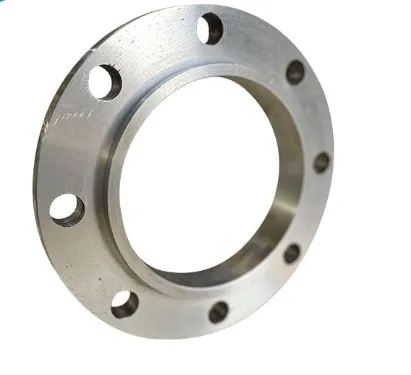-
Cangzhou Yulong Steel Co., Ltd.
-
Phone:
+86 13303177267 -
Email:
admin@ylsteelfittings.com
- English
- Arabic
- Italian
- Spanish
- Portuguese
- German
- kazakh
- Persian
- Greek
- French
- Russian
- Polish
- Thai
- Indonesian
- Vietnamese
- Zulu
- Korean
- Uzbek
- Hindi
- Serbian
- Malay
- Ukrainian
- Gujarati
- Haitian Creole
- hausa
- hawaiian
- Hebrew
- Miao
- Hungarian
- Icelandic
- igbo
- irish
- Japanese
- Javanese
- Kannada
- Khmer
- Rwandese
- Afrikaans
- Albanian
- Amharic
- Armenian
- Azerbaijani
- Basque
- Belarusian
- Bengali
- Bosnian
- Bulgarian
- Catalan
- Cebuano
- China
- China (Taiwan)
- Corsican
- Croatian
- Czech
- Danish
- Esperanto
- Estonian
- Finnish
- Frisian
- Galician
- Georgian
- Kurdish
- Kyrgyz
- Lao
- Latin
- Latvian
- Lithuanian
- Luxembourgish
- Macedonian
- Malgashi
- Malayalam
- Maltese
- Maori
- Marathi
- Mongolian
- Myanmar
- Nepali
- Norwegian
- Norwegian
- Occitan
- Pashto
- Dutch
- Punjabi
- Romanian
- Samoan
- Scottish Gaelic
- Sesotho
- Shona
- Sindhi
- Sinhala
- Slovak
- Slovenian
- Somali
- Sundanese
- Swahili
- Swedish
- Tagalog
- Tajik
- Tamil
- Tatar
- Telugu
- Turkish
- Turkmen
- Urdu
- Uighur
- Welsh
- Bantu
- Yiddish
- Yoruba

Sep . 04, 2024 19:30 Back to list
A333 Gr6 Pipe - High-Quality Low-Temperature Steel Pipes
Understanding the Role of A333 Gr. 6 Material in Industrial Applications
In the field of industrial engineering and materials science, the specification and selection of materials play a crucial role in the construction and functionality of various applications. Among the materials widely utilized in the industry is ASTM A333 Grade 6, commonly referred to as A333 Gr. 6. This material is particularly significant in low-temperature applications, making it an essential choice across various sectors, especially in the energy and structural industries.
Composition and Properties
ASTM A333 Gr. 6 is a carbon steel alloy specifically designed for low-temperature service. It comprises several elements that endow it with exceptional toughness and ductility. The primary chemical composition includes carbon, manganese, phosphorus, sulfur, and maintained low alloy content, making it well-suited for applications where brittleness at lower temperatures is a concern. This material generally exhibits a yield strength of around 35,000 psi and a tensile strength of approximately 60,000 psi, which ensures that it can withstand significant stress while maintaining its integrity.
Understanding the Role of A333 Gr
. 6 Material in Industrial ApplicationsThe unique properties of A333 Gr. 6 make it particularly suitable for use in the fabrication of pressure vessels and pipelines that operate under extremely low temperatures, such as those found in the oil and gas industry. For instance, in the transportation of liquefied natural gas (LNG), the ability to endure the rigorous demands of low temperatures is vital. A333 Gr. 6 is also utilized in cryogenic systems, where the material’s low-temperature toughness prevents brittle fracture during operation.
a333 gr6

Moreover, its versatility allows it to be used in other industrial applications, such as nuclear power plants, where safety and durability are paramount. In these settings, A333 Gr. 6 pipes and fittings are critical in maintaining the efficient and safe operation of systems that are highly sensitive to temperature variations.
Welding and Fabrication
Another important aspect of A333 Gr. 6 is its welding capability, alongside its structural integrity. Standard welding techniques can be applied to this material, allowing for ease of fabrication and customization in various applications. However, it is essential to adhere to specific guidelines to avoid potential issues, such as hydrogen-induced cracking, which can occur if not managed appropriately during the welding process.
Conclusion
In summary, ASTM A333 Grade 6 is a key material that demonstrates exceptional performance in low-temperature environments. Its favorable mechanical properties, combined with its versatility in applications ranging from the oil and gas sector to nuclear energy, highlight its importance in modern engineering. As industries continue to explore advancements and innovations, the significance of reliable materials like A333 Gr. 6 cannot be underestimated. With ongoing research and development, it is expected that new applications and enhancements in fabrication processes will further solidify the standing of A333 Gr. 6 as a material of choice for rigorous industrial needs.
Latest news
-
ANSI 150P SS304 SO FLANGE
NewsFeb.14,2025
-
ASTM A333GR6 STEEL PIPE
NewsJan.20,2025
-
ANSI B16.5 WELDING NECK FLANGE
NewsJan.15,2026
-
ANSI B16.5 SLIP-ON FLANGE
NewsApr.19,2024
-
SABS 1123 FLANGE
NewsJan.15,2025
-
DIN86044 PLATE FLANGE
NewsApr.19,2024
-
DIN2527 BLIND FLANGE
NewsApr.12,2024
-
JIS B2311 Butt-Welding Fittings LR/SR 45°/90° /180°Seamless/Weld
NewsApr.23,2024











